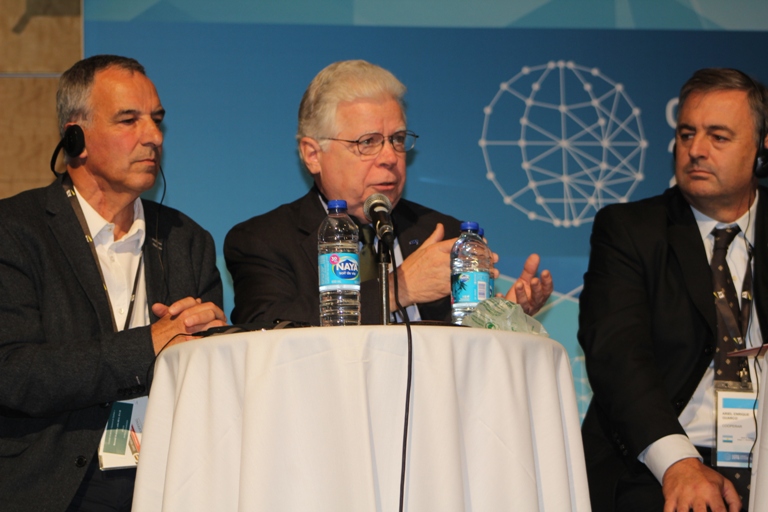
QUÉBEC CITY—It’s the sixth cooperative principle—Cooperation Among Cooperatives—and it’s a must if small- and medium-sized enterprises hope to make a difference.
“We’ve been really convinced that small is beautiful—as long as we are smart and work together,” said Mathieu Richard, president of Enercoop, a French renewable energy cooperative utility.
That was the sentiment of cooperative leaders on a panel at the International Summit of Cooperatives that mapped the future of co-ops in industry, services and energy: Cooperatives teach self-reliance, but also must rely on each other.
“As new needs emerge, co-ops have been the answer,” said Martin Lowery, NRECA executive vice president for member and association relations, who moderated part of the Oct. 12 forum.
Lowery pointed to the formation of the National Rural Utilities Cooperative Finance Corp., Federated Rural Electric Insurance Exchange and other supporting co-ops as examples of entrepreneurial cooperation that can strengthen the movement.
Tim Huet, founder and legal counsel to San Francisco-based Arizmendi Association of Cooperatives, familiar for bakery co-ops, agreed that co-ops can use their success to build more new co-ops.
New Arizmendi hires undergo training in corporate law, cooperative finance, democratic leadership and group decision making, he said. “Our job is to train them not just in production but in democratic management,” he said. “We build hope.”
National associations also play a key role in coordinating small- and medium-sized co-ops.
Ariel Guarco is president of Cooperar and Fedecoba, the Cooperative Confederation of the Argentine Republic, where co-ops contribute 10 percent of the nation’s gross domestic product.
“We know that if we buy all the supplies we need from the hands of cooperatives we can double that percentage,” he said. “We have shown that small local cooperatives are viable, if we consolidate efficient networks.”
Richard of France and Lowery said the energy sector is ripe for innovation because of the sheer number of co-ops and the fact that small enterprises often can be more nimble than investor- or state-owned utilities.
For example, Brazil has 126 rural electricity cooperatives with more than 1 million members and Canada had 71 renewable energy cooperatives by one recent count. Enercoop has 10 regional co-ops and 40,000 clients in France.
“Rural electricity is a key issue in terms of sustainable development, but it also is a lever to put into practice citizen cooperation and participation,” Richard said. “Cooperatives are the ideal vehicle to enable a collective investment in the democratization of energy.”
Steven Johnson is a staff writer at NRECA.